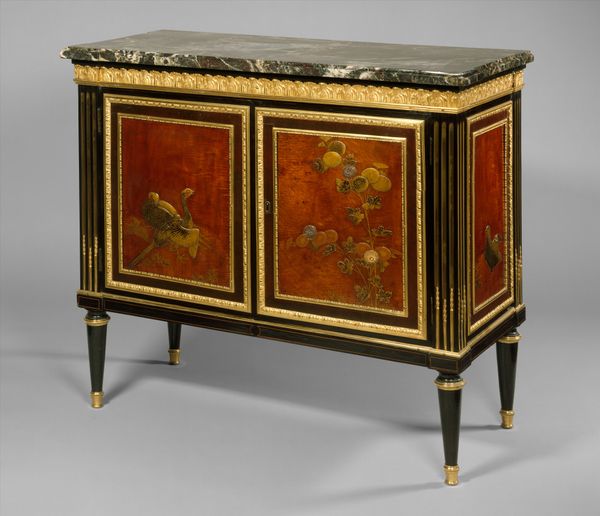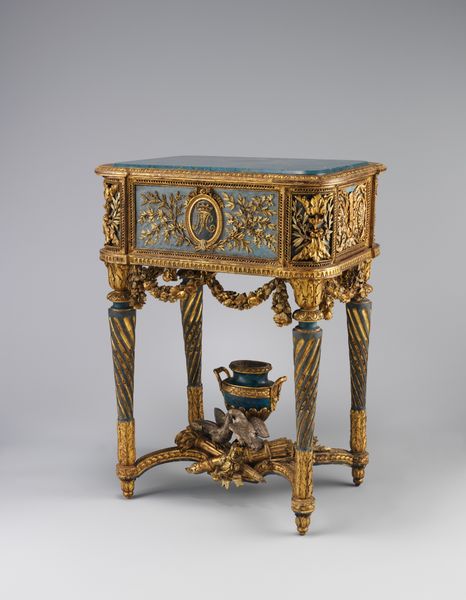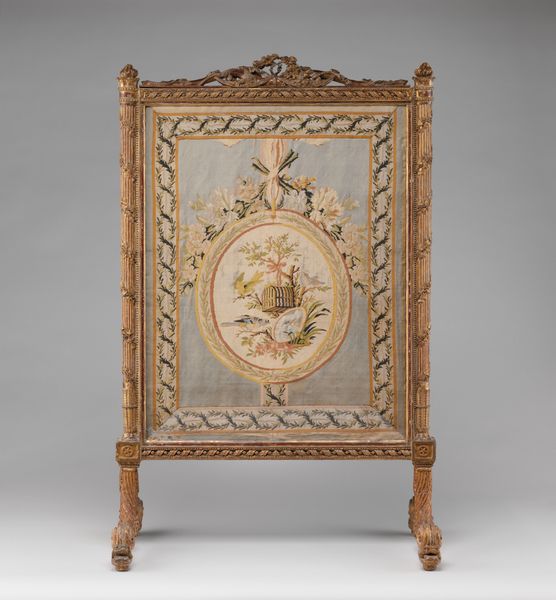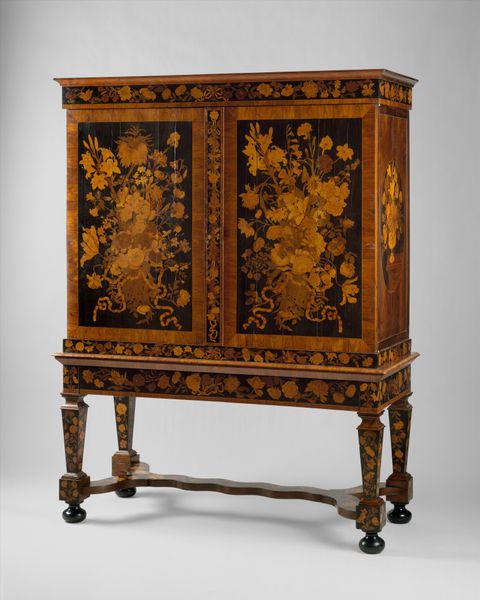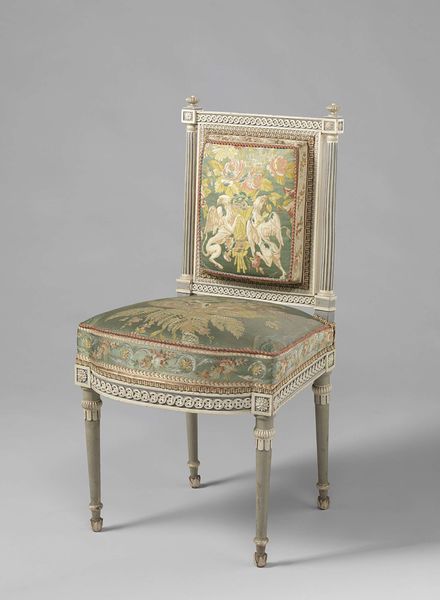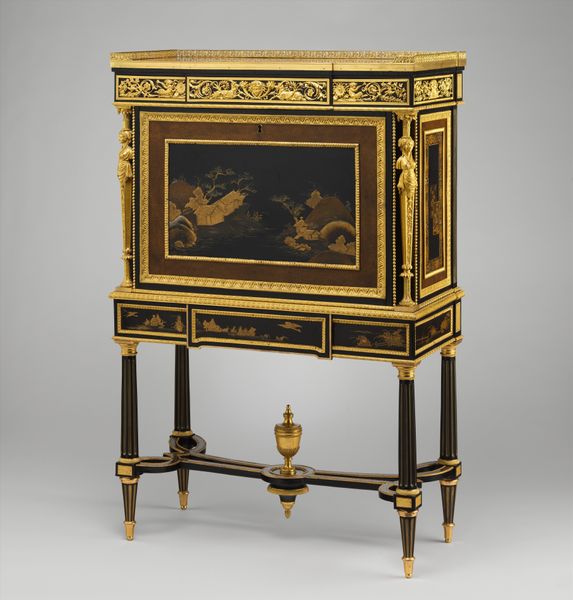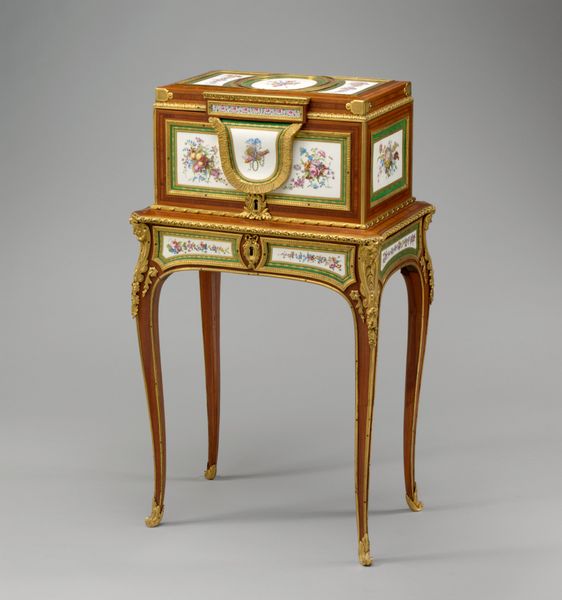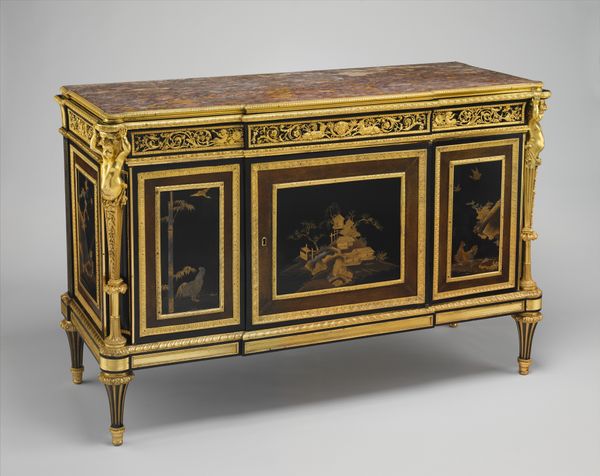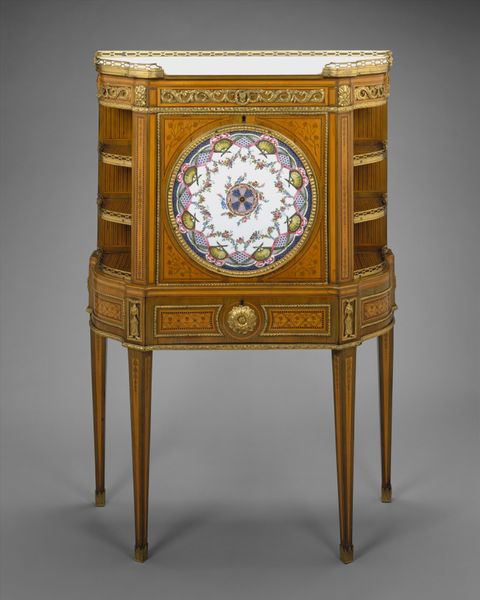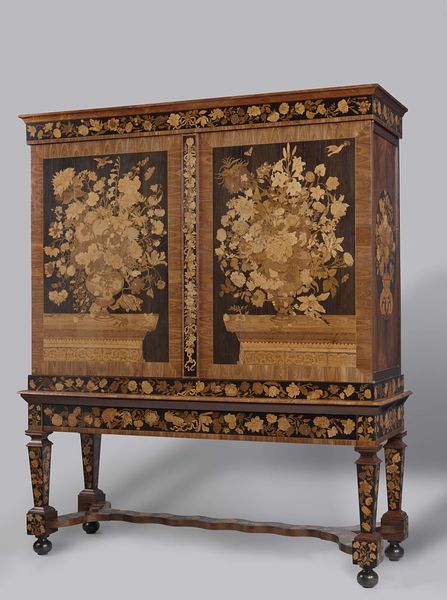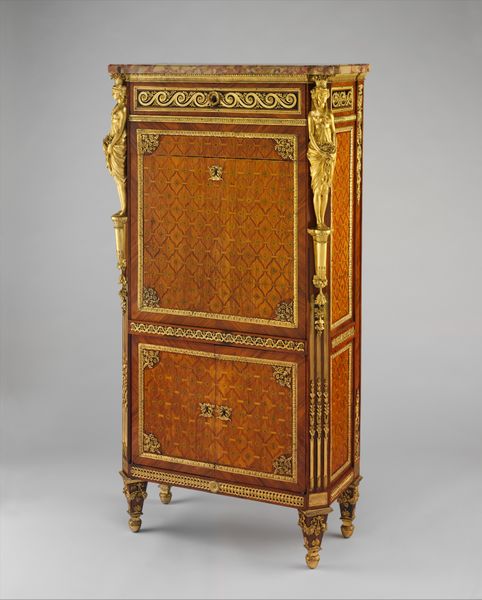
Drop-front desk (secrétaire à abattant or secrétaire en cabinet) 1782 - 1792
0:00
0:00
Dimensions: Overall: 51 × 27 × 16 in. (129.5 × 68.6 × 40.6 cm)
Copyright: Public Domain
Curator: This is a drop-front desk, a "secrétaire à abattant," crafted sometime between 1782 and 1792. Adam Weisweiler is credited with its creation, and you can find it on display here at the Metropolitan Museum. Editor: It strikes me immediately as something designed to impress. The meticulous details, the contrasting wood, it whispers of wealth and leisure. Curator: Absolutely. It’s a perfect example of late 18th-century Neoclassicism, moving away from the exuberance of Rococo but still incorporating decorative arts. The use of rare veneers, gilt bronze mounts, and a Sèvres porcelain plaque... Editor: The plaque is mesmerizing. Flowers bursting from what looks almost like an antique vase. Are these symbols layered in for specific reasons, conveying something to the desk’s owner? Curator: Precisely. Flowers during this era weren’t merely decorative. Each bloom carried symbolic weight, potentially communicating messages of love, fidelity, or remembrance, very private and personal for its user. And you see those cameo medallions lining the edges? Each face represents an historical personage from the classical world, adding to the layers. Editor: A powerful statement in a time of upheaval, aligning the owner with enduring historical figures and refined aesthetic tastes. How accessible would such an item be to the general public back then? Curator: Largely inaccessible. A piece like this speaks to the immense social stratification of the period. This wouldn't be found in a commoner's home; it would be commissioned for a wealthy aristocrat, reflecting power, privilege, and intellectual pursuits. It functioned as both a workspace and a display of affluence. Editor: So this ornate desk is less about simple utility and more a declaration. Looking at it now, one can imagine the secrets it guarded, the letters written, perhaps even the course of history subtly influenced from within. Curator: I agree, its existence serves to give us an indication of a highly coded form of existence at the time it was produced. Editor: It definitely leaves me contemplating the hidden meanings we assign to everyday objects, how something seemingly functional can be laden with historical and personal narratives.
Comments
No comments
Be the first to comment and join the conversation on the ultimate creative platform.


